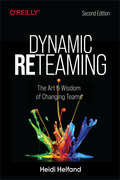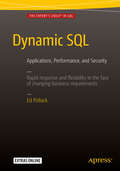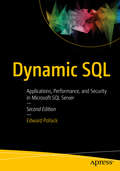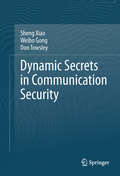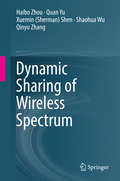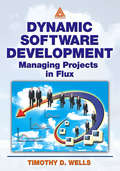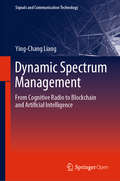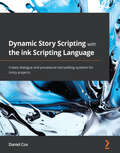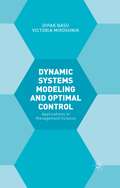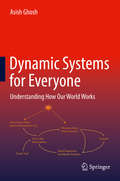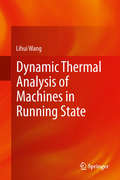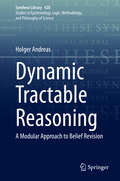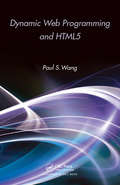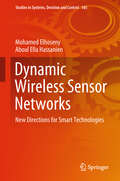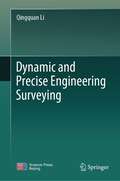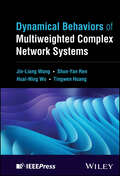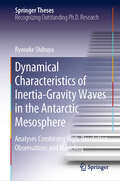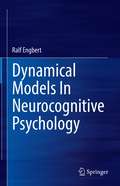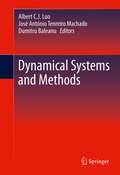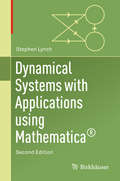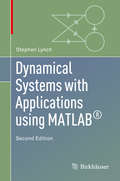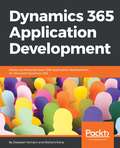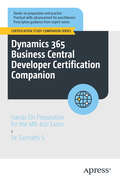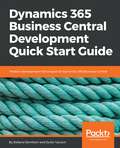- Table View
- List View
Dynamic Reteaming: The Art and Wisdom of Changing Teams
by Heidi HelfandYour team will change whether you like it or not. People will come and go. Your company might double in size or even be acquired. In this practical book, author Heidi Helfand shares techniques for reteaming effectively. Engineering leaders will learn how to catalyze team change to reduce the risk of attrition, learning and career stagnation, and the development of knowledge silos.Based on research into well-known software companies, the patterns in this book help CTOs and team managers effectively integrate new hires into an existing team, manage a team that has lost members, or deal with unexpected change. You’ll learn how to isolate teams for focused innovation, rotate team members for knowledge sharing, break through organizational apathy, and more.You’ll explore:Real-world examples that demonstrate why and how organizations reteamFive reteaming patterns: One by One, Grow and Split, Isolation, Merging, and SwitchingTactics to help you master dynamic reteaming in your companyStories that demonstrate problems caused by reteaming anti-patterns
Dynamic SQL
by Edward PollackThis book is an introduction and deep-dive into the many uses of dynamic SQL in Microsoft SQL Server. Dynamic SQL is key to large-scale searching based upon user-entered criteria. It's also useful in generating value-lists, in dynamic pivoting of data for business intelligence reporting, and for customizing database objects and querying their structure. Executing dynamic SQL is at the heart of applications such as business intelligence dashboards that need to be fluid and respond instantly to changing user needs as those users explore their data and view the results. Yet dynamic SQL is feared by many due to concerns over SQL injection attacks. Reading Dynamic SQL: Applications, Performance, and Security is your opportunity to learn and master an often misunderstood feature, including security and SQL injection. All aspects of security relevant to dynamic SQL are discussed in this book. You will learn many ways to save time and develop code more efficiently, and you will practice directly with security scenarios that threaten companies around the world every day. Dynamic SQL: Applications, Performance, and Security helps you bring the productivity and user-satisfaction of flexible and responsive applications to your organization safely and securely. Your organization's increased ability to respond to rapidly changing business scenarios will build competitive advantage in an increasingly crowded and competitive global marketplace. Discusses many applications of dynamic SQL, both simple and complex. Explains each example with demos that can be run at home and on your laptop. Helps you to identify when dynamic SQL can offer superior performance. Pays attention to security and best practices to ensure safety of your data. What you'll learn Build flexible applications that respond fast to changing business needs. Take advantage of unconventional but productive uses of dynamic SQL. Protect your data from attack through best-practices in your implementations. Know about SQL Injection and be confident in your defenses against it Run at high performance by optimizing dynamic SQL in your applications. Troubleshoot and debug dynamic SQL to ensure correct results. Who this book is for Dynamic SQL: Applications, Performance, and Security is for developers and database administrators looking to hone and build their T-SQL coding skills. The book is ideal for advanced users wanting to plumb the depths of application flexibility and troubleshoot performance issues involving dynamic SQL. The book is also ideal for beginners wanting to learn what dynamic SQL is about and how it can help them deliver competitive advantage to their organizations.
Dynamic SQL: Applications, Performance, and Security in Microsoft SQL Server
by Edward PollackTake a deep dive into the many uses of dynamic SQL in Microsoft SQL Server. This edition has been updated to use the newest features in SQL Server 2016 and SQL Server 2017 as well as incorporating the changing landscape of analytics and database administration. Code examples have been updated with new system objects and functions to improve efficiency and maintainability.Executing dynamic SQL is key to large-scale searching based on user-entered criteria. Dynamic SQL can generate lists of values and even code with minimal impact on performance. Dynamic SQL enables dynamic pivoting of data for business intelligence solutions as well as customizing of database objects. Yet dynamic SQL is feared by many due to concerns over SQL injection or code maintainability. Dynamic SQL: Applications, Performance, and Security in Microsoft SQL Server helps you bring the productivity and user-satisfaction of flexible and responsive applications to your organization safely and securely. Your organization’s increased ability to respond to rapidly changing business scenarios will build competitive advantage in an increasingly crowded and competitive global marketplace. With a focus on new applications and modern database architecture, this edition illustrates that dynamic SQL continues to evolve and be a valuable tool for administration, performance optimization, and analytics.What You'ill LearnBuild flexible applications that respond to changing business needsTake advantage of creative, innovative, and productive uses of dynamic SQLKnow about SQL injection and be confident in your defenses against itAddress performance concerns in stored procedures and dynamic SQLTroubleshoot and debug dynamic SQL to ensure correct resultsAutomate your administration of features within SQL ServerWho This Book is For Developers and database administrators looking to hone and build their T-SQL coding skills. The book is ideal for developers wanting to plumb the depths of application flexibility and troubleshoot performance issues involving dynamic SQL. The book is also ideal for programmers wanting to learn what dynamic SQL is about and how it can help them deliver competitive advantage to their organizations.
Dynamic Secrets in Communication Security
by Don Towsley Sheng Xiao Weibo GongDynamic secrets are constantly generated and updated from messages exchanged between two communication users. When dynamic secrets are used as a complement to existing secure communication systems, a stolen key or password can be quickly and automatically reverted to its secret status without disrupting communication. "Dynamic Secrets in Communication Security" presents unique security properties and application studies for this technology. Password theft and key theft no longer pose serious security threats when parties frequently use dynamic secrets. This book also illustrates that a dynamic secret based security scheme guarantees impersonation attacks are detected even if an adversary steals a user's password or their key is lost. Practitioners and researchers working in network security or wireless communications will find this book a must-have reference. "Dynamic Secrets in Communication Security" is also a valuable secondary text for advanced-level students in computer science and electrical engineering.
Dynamic Sharing of Wireless Spectrum
by Xuemin Sherman Shen Qinyu Zhang Haibo Zhou Quan Yu Shaohua WuThis book focuses on the current research on the dynamic spectrum sharing for efficient spectrum resource utilization, which covers the overlay spectrum sharing, underlay spectrum sharing and database-assisted spectrum sharing related research issues. Followed by a comprehensive review and in-depth discussion of the current state-of-the-art research literature and industry standardization, this book first presents a novel overlay spectrum sharing framework for dynamic utilization of available cellular frequency bands, formulates the dynamic spectrum sharing problem as a dynamic resource demand-supply matching problem, and accordingly develops a distributed fast spectrum sharing algorithm to solve the resource matching problem. A self-awareness power control approach for multi-hop routing selection is proposed, which can establish an effective and practical routing selection optimization in secondary access networks and minimize the interference to primary users. Finally, this book offers dynamic secondary access scheme for database-assisted spectrum sharing networks, which is targeted to support the prosperous wireless multimedia networking applications by leveraging the TV white spaces of geolocation databases while satisfying QoS guarantees of secondary users. The overlay spectrum sharing, underlay spectrum sharing, and database-assisted white spaces spectrum sharing research results that are presented in this book provide useful insights for the design of next generation wireless access networks. This book motivates a new line of thinking for efficient spectrum resource utilization and performance enhancements of future wireless access applications.
Dynamic Software Development: Managing Projects in Flux
by Timothy WellsThe ever changing nature of information makes the job of managing software development notoriously difficult. Dynamic Software Development: Managing Projects in Flux eases the burden by defining the principles, practices, skills, and techniques needed to manage a dynamic development environment. At a hands-on level, the text helps managers define t
Dynamic Spectrum Management: From Cognitive Radio to Blockchain and Artificial Intelligence (Signals and Communication Technology)
by Ying-Chang LiangThis open access book, authored by a world-leading researcher in this field, describes fundamentals of dynamic spectrum management, provides a systematic overview on the enabling technologies covering cognitive radio, blockchain, and artificial intelligence, and offers valuable guidance for designing advanced wireless communications systems. This book is intended for a broad range of readers, including students and professionals in this field, as well as radio spectrum policy makers.
Dynamic Spin-Fluctuation Theory of Metallic Magnetism
by Nikolai B. Melnikov Boris I. ReserThis book presents a theoretical framework for magnetism in ferromagnetic metals and alloys at finite temperatures. The objective of the book is twofold. First, it gives a detailed presentation of the dynamic spin-fluctuation theory that takes into account both local and long-wave spin fluctuations with any frequency. The authors provide a detailed explanation of the fundamental role of quantum spin fluctuations in the mechanism of metallic magnetism and illustrate the theory with concrete examples. The second objective of the book is to give an accurate and self-contained presentation of many-body techniques such as the functional integral method and Green's functions, via a number of worked examples. These computational methods are of great use to solid state physicists working in a range of specialties.The book is intended primarily for researchers, but can also be used as textbook. The introductory chapters offer clear and complete derivations of the fundamentals, which makes the presentation self-contained. The main text is followed by a number of well-organized appendices that contain a detailed presentation of the necessary many-body techniques and computational methods. The book also includes a list of symbols and detailed index. This volume will be of interest to a wide range of physicists interested in magnetism and solid state physics in general, both theoreticians and experimentalists.
Dynamic Story Scripting with the ink Scripting Language: Create dialogue and procedural storytelling systems for Unity projects
by Daniel CoxBring your stories to life by combining the narrative scripting language, ink, with a plugin to build dialogue, quest, and procedural storytelling systems for Unity projectsKey FeaturesLearn how to translate stories into ink code to create interactive projectsGain valuable insight into the ink story API to create engaging stories using the Unity pluginDevelop drop-in solutions to common narrative problems for Unity projectsBook Descriptionink is a narrative scripting language designed for use with game engines such as Unity through a plugin that provides an application programming interface (API) to help you to move between the branches of a story and access the values within it. Hands-On Dynamic Story Scripting with the ink Scripting Language begins by showing you how ink understands stories and how to write some simple branching projects. You'll then move on to advanced usage with looping structures, discovering how to use variables to set up dynamic events in a story and defining simple rules to create complex narratives for use with larger Unity projects. As you advance, you'll learn how the Unity plugin allows access to a running story through its API and explore the ways in which this can be used to move data in and out of an ink story to adapt to different interactions and forms of user input. You'll also work with three specific use cases of ink with Unity by writing a dialogue system and creating quest structures and other branching narrative patterns. Finally, this will help you to find out how ink can be used to generate procedural storytelling patterns for Unity projects using different forms of data input. By the end of this book, you will be able to move from a simple story to an intricate Unity project using ink to power complex narrative structures.What you will learnDiscover how ink understands stories and their partsExamine ink patterns for making branching narrativesDevelop code in Unity using the ink plugin to manipulate storiesDesign advanced projects combining ink stories with C# codeCompare common use cases for ink and Unity, such as dialogue systemsDetermine how ink can best fit into future narrative projectsWho this book is forThis book is for Unity developers looking for a solution for narrative-driven projects and authors who want to create interactive story projects in Unity. Basic knowledge of Unity game engine development and related concepts is needed to get the most out of this book.
Dynamic Systems Modelling and Optimal Control: Applications in Management Science
by Dipak Basu Victoria MiroshnikDynamic Systems Modelling and Optimal Control explores the applications of oil field development, energy system modelling, resource modelling, time varying control of dynamic system of national economy, and investment planning.
Dynamic Systems for Everyone: Understanding How Our World Works
by Asish GhoshSystems are everywhere and we are surrounded by them. We are a complex amalgam of systems that enable us to interact with an endless array of external systems in our daily lives. They are electrical, mechanical, social, biological, and many other types that control our environment and our well-being. By appreciating how these systems function, will broaden our understanding of how our world works. Readers from a variety of disciplines will benefit from the knowledge of system behavior they will gain from this book and will be able to apply those principles in various contexts. The treatment of the subject is non-mathematical, and the book considers some of the latest concepts in the systems discipline, such as agent based systems, optimization, and discrete events and procedures. The diverse range of examples provided in this book, will allow readers to:Apply system knowledge at work and in daily life without deep mathematical knowledge;Build models and simulate system behaviors on a personal computer; Optimize systems in many different ways;Reduce or eliminate unintended consequences;Develop a holistic world view .This book will enable readers to not only better interact with the systems in their professional and daily lives, but also allow them to develop and evaluate them for their effectiveness in achieving their designed purpose.Comments from Reviewers: “This is a marvelously well written introduction to Systems Thinking and System Dynamics - I like it because it introduces Systems Thinking with meaningful examples, which everyone should be able to readily connect” - Gene Bellinger, Organizational theorist, systems thinker, and consultant, Director Systems Thinking World “Excellent book ...very well written. Mr. Ghosh's world view of system thinking is truly unique” - Peter A. Rizzi, Professor Emeritus, University of Massachusetts Dartmouth “A thorough reading of the book provides an interesting way to view many problems in our society” –Bradford T. Stokes, Poppleton Chair and Professor Emeritus, The Ohio State University College of Medicine “This is a very good and very readable book that is a must read for any person involved in systems theory in any way - which may actually include just about everyone” - Peter G. Martin, Vice President Business Value Consulting, Schneider Electric
Dynamic Thermal Analysis of Machines in Running State
by Lihui WangWith the increasing complexity and dynamism in today's machine design and development, more precise, robust and practical approaches and systems are needed to support machine design. Existing design methods treat the targeted machine as stationery. Analysis and simulation are mostly performed at the component level. Although there are some computer-aided engineering tools capable of motion analysis and vibration simulation etc., the machine itself is in the dry-run state. For effective machine design, understanding its thermal behaviours is crucial in achieving the desired performance in real situation. Dynamic Thermal Analysis of Machines in Running State presents a set of innovative solutions to dynamic thermal analysis of machines when they are put under actual working conditions. The objective is to better understand the thermal behaviours of a machine in real situation while at the design stage. The book has two major sections, with the first section presenting a broad-based review of the key areas of research in dynamic thermal analysis and simulation, and the second section presents an in-depth treatment of relevant methodology and algorithms, leading to better understanding of a machine in real situation. The book is a collection of novel ideas, taking into account the need for presenting intellectual challenges while appealing to a broad readership, including academic researchers, practicing engineers and managers, and graduate students. Given the essential role of modern machines in factory automation and quality assurance, a book dedicated to the topic of dynamic thermal analysis, and its practical applications to machine design would be beneficial to readers of all design and manufacturing sectors, from machine design to automotive engineering, in better understanding the present challenges and solutions, as well as future research directions in this important area.
Dynamic Tractable Reasoning: A Modular Approach to Belief Revision (Synthese Library #420)
by Holger AndreasThis book aims to lay bare the logical foundations of tractable reasoning. It draws on Marvin Minsky's seminal work on frames, which has been highly influential in computer science and, to a lesser extent, in cognitive science. Only very few people have explored ideas about frames in logic, which is why the investigation in this book breaks new ground. The apparent intractability of dynamic, inferential reasoning is an unsolved problem in both cognitive science and logic-oriented artificial intelligence. By means of a logical investigation of frames and frame concepts, Andreas devises a novel logic of tractable reasoning, called frame logic. Moreover, he devises a novel belief revision scheme, which is tractable for frame logic. These tractability results shed new light on our logical and cognitive means to carry out dynamic, inferential reasoning. Modularity remains central for tractability, and so the author sets forth a logical variant of the massive modularity hypothesis in cognitive science.This book conducts a sustained and detailed examination of the structure of tractable and intelligible reasoning in cognitive science and artificial intelligence. Working from the perspective of formal epistemology and cognitive science, Andreas uses structuralist notions from Bourbaki and Sneed to provide new foundational analyses of frames, object-oriented programming, belief revision, and truth maintenance. Andreas then builds on these analyses to construct a novel logic of tractable reasoning he calls frame logic, together with a novel belief revision scheme that is tractable for frame logic. Put together, these logical analyses and tractability results provide new understandings of dynamic and inferential reasoning.Jon Doyle, North Carolina State University
Dynamic Web Programming and HTML5
by Paul S. WangWith organizations and individuals increasingly dependent on the Web, the need for competent, well-trained Web developers and maintainers is growing. Helping readers master Web development, Dynamic Web Programming and HTML5 covers specific Web programming languages, APIs, and coding techniques and provides an in-depth understanding of the underlyin
Dynamic Wireless Sensor Networks: New Directions For Smart Technologies (Studies in Systems, Decision and Control #165)
by Aboul Ella Hassanien Mohamed ElhosenyThis book provides a collection of high-quality research works that address broad challenges in both theoretical and applied aspects of dynamic wireless sensor networks (WSNs) for intelligent and smart applications in a variety of environments. It presents the most central concepts associated with Dynamic Wireless Sensor Networks applications, and discusses issues surrounding Wireless Sensor Network Structures for complex and mobile-based applications. The book subsequently discusses several topics related to energy management in dynamic WSNs, and reviews the steps involved in building a secure and trusted data transmission model using the WSN applications of intelligent environments. Lastly, it discusses the applications of WSNs in live data systems such as SCADA systems. Readers will discover a collection of high-quality research works that address broad challenges in both theoretical and applied aspects of WSNs for intelligent real-life applications. In addition, the book presents original research on the application of a dynamic WSN to solve the problem of energy consumption in a secure WSN during the process of data aggregation and transmission. Written by respected experts in the field, the book will stimulate further efforts in the application of the intelligent WSNs model, helping to solve the problem of data processing in a limited resource WSN-based environment.
Dynamic and Precise Engineering Surveying
by Qingquan LiDriven by the increasingly expanding needs of infrastructure construction, operation and maintenance, as well as the rapid developments of intelligent sensing and information technology, precise engineering surveying has been transformed from static, discrete, and manual into dynamic, continuous, and intelligent ways. This transformation leads to an advanced multidisciplinary field, dynamic and precise engineering surveying, on which the author has worked for over two decades. This book systematically summarizes the fundamentals, methods, and applications in dynamic and precise engineering surveying. The contents mainly include two parts: the first part introduces principles and methods of dynamic and precise engineering surveying; the second part presents representative applications in which innovative methods and advanced equipment are applied in the construction, operation and maintenance of mega and complex infrastructures.Readers engaged in surveying and mapping, civil engineering, water conservancy engineering, railway engineering, electronic information, and computer science, including undergraduates, graduates, researchers and engineers, will find it an informative reference.
Dynamical Behaviors of Multiweighted Complex Network Systems
by Tingwen Huang Jin-Liang Wang Huai-Ning Wu Shun-Yan RenHighly comprehensive resource for studying neural networks, complex networks, synchronization, passivity, and associated applications Dynamical Behaviors of Multiweighted Complex Network Systems discusses the dynamical behaviors of various multiweighted complex dynamical networks, with detailed insight on synchronization for directed and undirected complex networks (CNs) with multiple state or delayed state couplings subject to recoverable attacks, along with passivity and synchronization for coupled neural networks with multi-weights (CNNMWs) by virtue of devised proportional-integral-derivative (PID) controllers. The book also investigates finite-time synchronization (FTS) and H-infinity synchronization for two types of coupled neural networks (CNNs) and focuses on finite-time passivity (FTP) and finite-time synchronization (FTS) for complex dynamical networks with multiple state/derivative couplings based on the proportional-derivative (PD) control method. Final chapters consider finite-time output synchronization and H-infinity output synchronization problems, and multiple weighted coupled reaction-diffusion neural networks (CRDNNs) with and without coupling delays. Other topics covered in Dynamical Behaviors of Multiweighted Complex Network Systems include: Criteria of FTP for complex dynamical networks with multiple state couplings (CDNMSCs), formulated by utilizing the PD controller Finite-time passivity (FTP) concepts for the spatially and temporally systems with different dimensions of output and input FTS and finite time H-infinity synchronization problems for CDNs with multiple state/derivative couplings by utilizing state feedback control approach and selecting suitable parameter adjustment schemes Adaptive output synchronization and output synchronization of CDNs with multiple output or output derivative couplings, and other adaptive control schemes Enabling readers to understand foundational concepts and grasp the latest research, Dynamical Behaviors of Multiweighted Complex Network Systems is essential for all who study neural networks, complex networks, synchronization, passivity, and their applications.
Dynamical Characteristics of Inertia-Gravity Waves in the Antarctic Mesosphere: Analyses Combining High-Resolution Observations and Modeling (Springer Theses)
by Ryosuke ShibuyaThis book examines the origins and dynamical characteristics of atmospheric inertia-gravity waves in the Antarctic mesosphere. Gravity waves are relatively small-scale atmospheric waves with a restoring force of buoyancy that can transport momentum upward from the troposphere to the middle atmosphere. In previous studies, the dynamical characteristics of mesospheric gravity waves have not been fully examined using numerical simulations, since performing a numerical simulation with a high resolution and a high model-top requires considerable computational power. However, recent advances in computational capabilities have allowed us to perform numerical simulations using atmospheric general circulation models, which cover the troposphere to the mesosphere with a sufficiently fine horizontal resolution to resolve small-scale gravity waves. The book first describes the simulation of mesospheric gravity waves using a high-resolution non-hydrostatic atmospheric model with a high model top. The accuracy of the numerical results was confirmed by the first Mesosphere-Stratosphere-Troposphere/Incoherent Scattering (MST/IS) radar observation in the Antarctic. It also depicts the origins and propagation processes of mesospheric gravity waves on the basis of the results of the high-resolution numerical model. The behaviors of mesospheric gravity waves can be clearly explained using both fundamental and cutting-edge theories of fluid dynamics
Dynamical Models In Neurocognitive Psychology
by Ralf EngbertThe development of cognitive models is a key step in the challenging research program to advance our understanding of human cognition and behavior. Dynamical models represent a general and flexible approach to cognitive modeling. This introduction focuses on applications of stochastic processes and dynamical systems to model cognition. The dynamical approach is particularly useful to emphasize the strong link between experimental research (and its paradigms), data analysis, and mathematical models including their computer implementation for numerical simulation. Most of specific examples are from the domain of eye movement research, with concepts being applicable to a broad range of problems in cognitive modeling. The textbook aims at the graduate and/or advanced undergraduate level for students in Cognitive Science and related disciplines such as Psychology and Computer Science. Joint introduction of the theory of cognitive processes and mathematical models, their underlying mathematical concepts, numerical simulation, and analysis;The focus on eye movements provide a theoretically coherent, but very general application area;Computer code in R Programming Language for Statistical Computing is available for all examples, figures, and solutions to exercises.
Dynamical Systems and Methods
by Albert C. Luo José António Machado Dumitru BaleanuNonlinear Systems and Methods For Mechanical, Electrical and Biosystems presents topics observed at the 3rd Conference on Nonlinear Science and Complexity(NSC), focusing on energy transfer and synchronization in hybrid nonlinear systems. The studies focus on fundamental theories and principles,analytical and symbolic approaches, computational techniques in nonlinear physical science and mathematics. Broken into three parts, the text covers: Parametrical excited pendulum, nonlinear dynamics in hybrid systems, dynamical system synchronization and (N+1) body dynamics as well as new views different from the existing results in nonlinear dynamics, mathematical methods for dynamical systems including conservation laws, dynamical symmetry in nonlinear differential equations and invex energies and nonlinear phenomena in physical problems such as solutions, complex flows, chemical kinetics, Toda lattices and parallel manipulator. This book is useful to scholars, researchers and advanced technical members of industrial laboratory facilities developing new tools and products.
Dynamical Systems with Applications Using Mathematica®
by Stephen LynchThis book provides an introduction to the theory of dynamical systems with the aid of the Mathematica(R) computer algebra package. The book has a very hands-on approach and takes the reader from basic theory to recently published research material. Emphasized throughout are numerous applications to biology, chemical kinetics, economics, electronics, epidemiology, nonlinear optics, mechanics, population dynamics, and neural networks. Theorems and proofs are kept to a minimum. The first section deals with continuous systems using ordinary differential equations, while the second part is devoted to the study of discrete dynamical systems.
Dynamical Systems with Applications using MATLAB®
by Stephen LynchThis textbook, now in its second edition, provides a broad introduction to both continuous and discrete dynamical systems, the theory of which is motivated by examples from a wide range of disciplines. It emphasizes applications and simulation utilizing MATLAB®, Simulink®, the Image Processing Toolbox® and the Symbolic Math toolbox®, including MuPAD. Features new to the second edition include · sections on series solutions of ordinary differential equations, perturbation methods, normal forms, Gröbner bases, and chaos synchronization; · chapters on image processing and binary oscillator computing; · hundreds of new illustrations, examples, and exercises with solutions; and · over eighty up-to-date MATLAB program files and Simulink model files available online. These files were voted MATLAB Central Pick of the Week in July 2013. The hands-on approach of Dynamical Systems with Applications using MATLAB, Second Edition, has minimal prerequisites, only requiring familiarity with ordinary differential equations. It will appeal to advanced undergraduate and graduate students, applied mathematicians, engineers, and researchers in a broad range of disciplines such as population dynamics, biology, chemistry, computing, economics, nonlinear optics, neural networks, and physics. Praise for the first edition Summing up, it can be said that this text allows the reader to have an easy and quick start to the huge field of dynamical systems theory. MATLAB/SIMULINK facilitate this approach under the aspect of learning by doing. --OR News/Operations Research Spectrum The MATLAB programs are kept as simple as possible and the author's experience has shown that this method of teaching using MATLAB works well with computer laboratory classes of small sizes. . . . I recommend 'Dynamical Systems with Applications using MATLAB' as a good handbook for a diverse readership: graduates and professionals in mathematics, physics, science and engineering. --Mathematica
Dynamics 365 Application Development: Master professional-level CRM application development for Microsoft Dynamics 365
by Deepesh Somani Nishant RanaLearn, develop, and design applications using the new features in Microsoft Dynamics CRM Key Features - Implement business logic using processes, plugins, and client-side scripts with MS Dynamics 365 - Develop custom CRM solutions to improve your business applications - A comprehensive guide that covers the new features of Microsoft Dynamics 365 and increasingly advanced topics. Book Description Microsoft Dynamics 365 CRM is the most trusted name in enterprise-level customer relationship management. Thelatest version of Dynamics CRM comes with the important addition of exciting features guaranteed to make your life easier. It comes straight off the shelf with a whole new frontier of updated business rules, process enhancements, SDK methods, and other enhancements. This book will introduce you to the components of the new designer tools, such as SiteMap, App Module, and Visual Designer for Business Processes. Going deeper, this book teaches you how to develop custom SaaS applications leveraging the features of PowerApps available in Dynamics 365.Further, you will learn how to automate business processes using Microsoft Flow, and then we explore Web API, the most important platform update in Dynamics 365 CRM. Here, you'll also learn how to implement Web API in custom applications. You will learn how to write an Azure-aware plugin to design and integrate cloud-aware solutions. The book concludes with configuring services using newly released features such as Editable grids, Data Export Service, LinkedIn Integration, Relationship Insights, and Live Assist. What you will learn - Discover new designers tools included in Dynamics 365 CRM - Develop apps using the platform-agnostic Web API - Leverage Azure Extensions to design cloud-aware applications - Learn how to implement CRUD operation - Create integrated real-world apps using Microsoft PowerApps and Flow by combining services such as Twitter, Facebook, and SharePoint - Configure and use Artificial Intelligence Azure Cognitive Services for Recommendation and Text Analytic servicesWho this book is for This book targets skilled developers who are looking to build business-solution software and are new to application development in Microsoft Dynamics 365, especially for CRM.
Dynamics 365 Business Central Developer Certification Companion: Hands On Preparation for the MB-820 Exam (Certification Study Companion Series)
by Dr. Gomathi SEmbark on a journey into Dynamics 365 Business Central development with this comprehensive guide to the MB-820 certification exam. This book will help you prepare for the examination and also help you understand Dynamics 365 Business Central better with real-world examples, exercises, and tips. The book starts with an introduction to the Exam pattern to help you understand the overall requirements. Next, you will delve into the fundamentals of Dynamics 365 Business Central Development, exploring its development tools and environment. After that, you will explore the installation, development, and deployment processes for Dynamics 365 Business Central. AL objects for Dynamics 365 Business Central are discussed next and you will go through creating and modifying AL objects along with their best practices. Further coverage is given to development tools essential for Dynamics 365 Business Central, followed by their integration with other applications. To end your journey, you will be guided with practice tests and exercises to help you prepare for the exam. After reading this book, you will be able to prepare yourself for the MB-820 Exam and be equipped with the basics of Dynamics 365 Business Central. What You Will Learn Understand application life cycle management principles and techniques Gain proficiency in debugging and troubleshooting Dynamics 365 Business Central solutions Apply advanced development techniques and concepts in real-world scenarios Understand AL language syntax and best practices Who This Book Is For New Dynamics 365 Business Central developers and Individuals preparing for the MB-820 certification exam
Dynamics 365 Business Central Development Quick Start Guide: Modern development techniques for Dynamics 365 Business Central
by Stefano Demiliani Duilio TacconiUnderstanding the new Microsoft Extension model for developmentKey FeaturesDevelop solutions for Dynamics 365 Business CentralOrient yourself with the new Microsoft Extension model for developmentLearn modern ways to develop with Dynamics 365 Business CentralBook DescriptionMicrosoft Dynamics 365 Business Central is the new SaaS ERP proposition from Microsoft. This latest version has many exciting features guaranteed to make your life easier. This book is an ideal guide to Dynamics 365 Business Central and will help you get started with implementing and designing solutions for real-world scenarios.This book will take you through the fundamental topics for implementing solutions based on Dynamics 365 Business Central (on-premise and SaaS). We'll see the core topics of the new development model (based on extensions) and we'll see how to create applications with the new Microsoft ERP proposition.The book begins by explaining the basics of Dynamics 365 Business Central and the Microsoft ERP proposition. We will then cover topics such as extensions, the new modern development model of Visual studio code, sandboxes, Docker, and many others. By the end of the book, you will have learned how to debug and compile extensions and to deploy them to the cloud and on-premise.You will also have learned how to create serverless business processes for Microsoft Dynamics 365 Business Central.What you will learnDevelop solutions for Dynamics 365 Business CentralCreate a sandbox for extensions development (local or on cloud)Use Docker with Dynamics 365 Business CentralCreate extensions for Dynamics 365 Business CentralHandle dependencies, translations and reportingDeploy extensions on-premise and to the cloudCreate serverless processes with Dynamics 365 Business CentralUnderstand source code management for ALWho this book is forThis book is for Microsoft Dynamics 365 Business Central solution developers and architects that needs to implement solutions based on the Microsoft's ERP (on-premise and SaaS).
